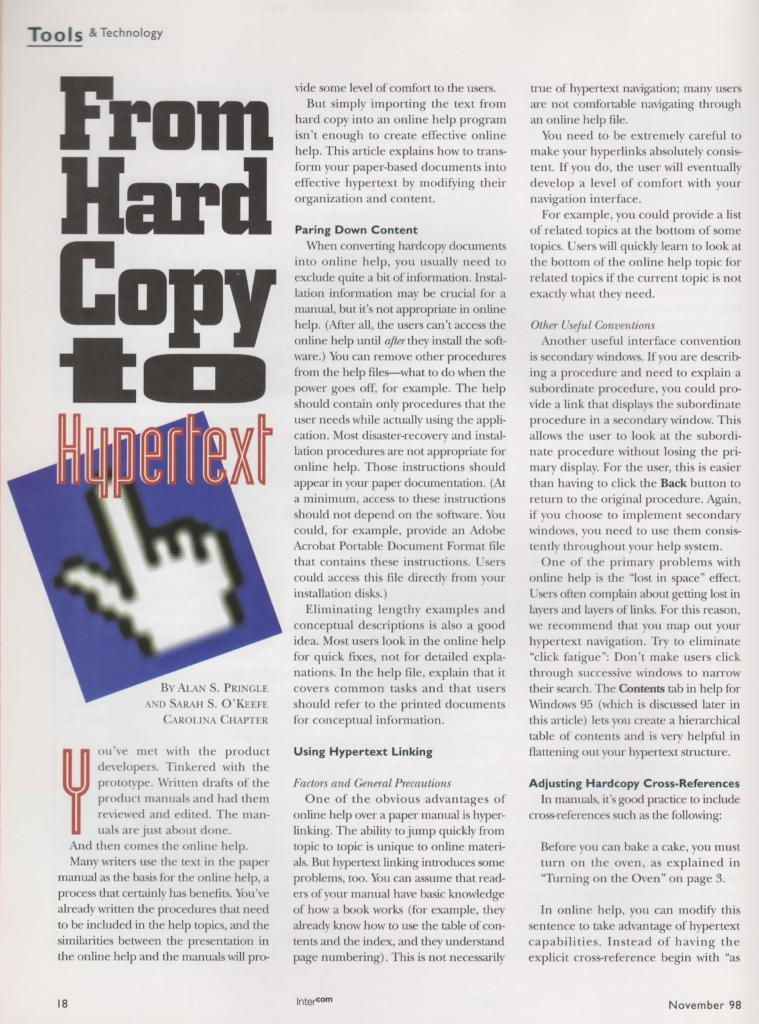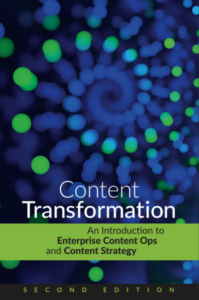Scriptorium 25th anniversary
Scriptorium was founded in 1997, which makes 2022 our 25th anniversary year. A lot has changed since 1997, but our overall focus remains the same. From the beginning, we have offered services at the intersection of content, publishing, and technology.
Goodbye to production editing
Back in 1997, one of our most common services was production editing. We provided support in cleaning up files and prepping documents for print or electronic distribution. Alan and I wrote an early article entitled “From Hard Copy to Hypertext” that talked about how to use this nifty concept of “single sourcing” to create both print and electronic deliverables from the same set of source files. I also distinctly remember getting into arguments with people about whether this was a) technically possible or b) a good idea.

Intercom, November 1998
The rise of structured content, which guaranteed template compliance, made it possible to build out automated formatting workflows. As a result, we don’t see much demand for production editing any more.
Today, it’s uncommon to hear “single sourcing,” but we do talk a lot about multichannel or omnichannel publishing, delivery-neutral content, and content operations. Instead of reviewing files to ensure conformance with formatting standards, we build structured content and rule-based formatting.
Strategic content rather than commodity content
For many years, our clients prioritized efficiency and cost reduction. They demanded reuse (less writing resulted in lower overall costs) and automated formatting (reduced time and cost associated with creating deliverables). Content management systems became standard to help maximize reuse and efficiency. Localization requirements increased, which made these techniques all the more financially appealing.
These days, many of our projects are shifting away from a pure cost focus. Or, more accurately, our clients expect efficiency as a baseline for content operations. Content strategy typically centers around:
- Improving content experience
- Unifying content strategy across the enterprise (for example, by creating shared terminology and taxonomies)
In short, our clients are moving up on the enterprise content strategy maturity model.
What will the future bring? There’s a lot of interest in Content as a Service (CaaS), which means a further evolution of publishing from “package and deliver” to “provide information access.” We expect a continued emphasis on automation for efficiency along with more sophisticated content delivery. Looking at our company’s arc over 25 years, it’s amazing to see the industry changes, and we are excited to see what the future of content holds for all of us.


